-
 Bitcoin
Bitcoin $107,618.5142
0.12% -
 Ethereum
Ethereum $2,512.1843
3.14% -
 Tether USDt
Tether USDt $1.0002
0.00% -
 XRP
XRP $2.2947
5.02% -
 BNB
BNB $659.4274
1.65% -
 Solana
Solana $157.2227
4.00% -
 USDC
USDC $0.9999
0.00% -
 TRON
TRON $0.2799
1.47% -
 Dogecoin
Dogecoin $0.1672
1.83% -
 Cardano
Cardano $0.5843
4.56% -
 Hyperliquid
Hyperliquid $40.9315
7.47% -
 Bitcoin Cash
Bitcoin Cash $515.7593
5.04% -
 Sui
Sui $2.8141
0.66% -
 Chainlink
Chainlink $13.6128
2.03% -
 UNUS SED LEO
UNUS SED LEO $9.1190
0.81% -
 Avalanche
Avalanche $18.1610
0.63% -
 Stellar
Stellar $0.2405
2.09% -
 Toncoin
Toncoin $2.9537
2.61% -
 Shiba Inu
Shiba Inu $0.0...01157
0.32% -
 Litecoin
Litecoin $86.7711
0.11% -
 Hedera
Hedera $0.1520
2.24% -
 Monero
Monero $319.9130
2.90% -
 Polkadot
Polkadot $3.4451
0.54% -
 Dai
Dai $1.0000
0.01% -
 Bitget Token
Bitget Token $4.5506
-1.01% -
 Ethena USDe
Ethena USDe $1.0001
-0.01% -
 Uniswap
Uniswap $7.2587
0.73% -
 Aave
Aave $282.7954
3.27% -
 Pepe
Pepe $0.0...09926
2.91% -
 Pi
Pi $0.5128
-2.62%
Is the probability of a breakthrough after repeated fluctuations below the annual line high?
A cryptocurrency's annual line, or 365-day moving average, often acts as key support or resistance, with repeated tests hinting at potential breakouts amid shifting market dynamics.
Jun 30, 2025 at 10:15 pm
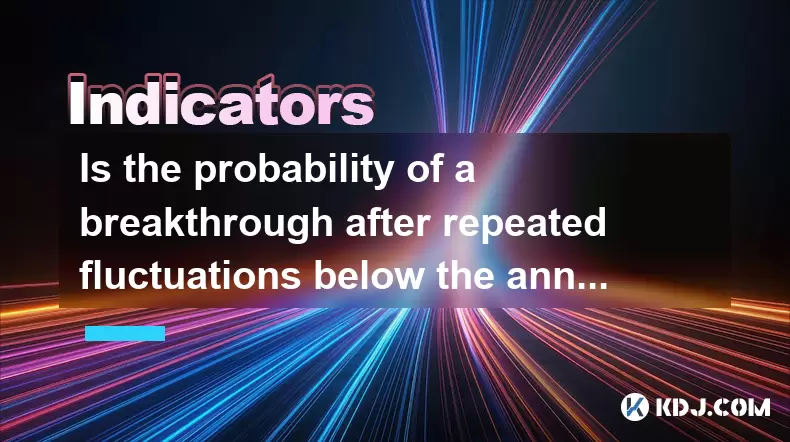
Understanding the Annual Line in Cryptocurrency Trading
In cryptocurrency trading, the annual line, also known as the 365-day moving average, is a critical technical indicator used by traders to assess long-term trends. This line serves as a dynamic support or resistance level depending on the price action around it. When the price of a cryptocurrency repeatedly fluctuates below this key level, many traders speculate whether a breakout above the annual line is likely.
The annual line acts as a psychological benchmark for investors and institutional players alike. A consistent struggle to maintain prices above this level often indicates weak investor confidence or strong selling pressure.
Historical Patterns of Price Behavior Below the Annual Line
Examining historical data from major cryptocurrencies like Bitcoin (BTC) and Ethereum (ETH) reveals recurring patterns when prices remain below the annual line for extended periods. In several cases, such conditions have led to prolonged bearish phases. However, there are instances where sustained volatility near the line eventually resulted in a breakout.
- BTC's behavior during late 2018 and early 2019 showed a consolidation phase under the annual line before breaking out decisively.
- ETH’s movement in mid-2020 demonstrated similar behavior after multiple tests of the annual line without a clear break until momentum picked up.
These examples suggest that while not guaranteed, a breakout can occur after repeated fluctuations if underlying fundamentals or market sentiment shifts positively.
Factors Influencing Breakout Probability
Several factors determine whether a cryptocurrency will break through the annual line after lingering below it:
- Volume spikes — A sudden increase in trading volume near the annual line often signals accumulation by large players.
- Positive macroeconomic developments — Events such as regulatory clarity or adoption by traditional financial institutions can boost investor confidence.
- On-chain metrics improvements — Metrics like active addresses, transaction volume, and exchange inflows can hint at renewed interest.
Each of these elements contributes to shifting market dynamics, potentially pushing the price beyond the annual line.
Technical Indicators That Signal an Impending Breakout
Traders use various tools to gauge whether a breakout is imminent after prolonged price stagnation under the annual line. Key indicators include:
- Relative Strength Index (RSI) — An RSI reading below 30 may indicate oversold conditions, increasing the likelihood of a bounce.
- Moving Average Convergence Divergence (MACD) — A bullish crossover in the MACD could signal strengthening momentum.
- Bollinger Bands compression — Narrowing bands suggest decreasing volatility, often preceding explosive moves in either direction.
Monitoring these tools alongside price action around the annual line provides traders with a more comprehensive view of potential breakout scenarios.
How to Approach Trading During These Conditions
For traders seeking to capitalize on potential breakouts after repeated failures to rise above the annual line, a structured approach is essential:
- Identify key support zones — Look for areas where the price has historically found temporary support despite being below the annual line.
- Use multi-timeframe analysis — Combine weekly and daily charts to filter false breakouts and confirm trend strength.
- Set conditional orders — Place buy-stop orders slightly above the annual line to automatically enter positions if the breakout occurs.
- Implement risk management rules — Use stop-loss orders just below recent swing lows to limit downside exposure.
This method allows traders to participate in potential breakouts without overcommitting capital prematurely.
Frequently Asked Questions
Q: Can a cryptocurrency stay below the annual line indefinitely?
Yes, especially if there is no fundamental catalyst to drive new buying interest. Some altcoins have remained below their annual lines for years due to lack of adoption or development progress.
Q: Is the annual line more significant than other moving averages?
It depends on the trader’s strategy. While the 200-day moving average is commonly watched, the annual line offers a broader perspective on long-term trends, particularly in volatile markets like crypto.
Q: How often do breakouts above the annual line fail?
False breakouts are common in cryptocurrency. It's crucial to wait for confirmation through candlestick closes and volume surges before considering a successful breakout.
Q: Should I always trade breakouts above the annual line?
No. Each asset behaves differently based on its ecosystem and market conditions. Always combine technical analysis with on-chain and macroeconomic insights before making decisions.
Disclaimer:info@kdj.com
The information provided is not trading advice. kdj.com does not assume any responsibility for any investments made based on the information provided in this article. Cryptocurrencies are highly volatile and it is highly recommended that you invest with caution after thorough research!
If you believe that the content used on this website infringes your copyright, please contact us immediately (info@kdj.com) and we will delete it promptly.
- SUI, TVL, BlockDAG: Navigating the Altcoin Landscape with Strategic Vision
- 2025-07-01 04:30:12
- BlockDAG, Cryptos, 2025 Trends: What's Hot and What's Not
- 2025-07-01 05:10:12
- Avalanche's Reign Challenged: Will Ruvi AI Lead the Next Bull Run?
- 2025-07-01 05:10:12
- Score Big with BetMGM Bonus: MLB, Soccer, and More!
- 2025-07-01 05:15:12
- Michael Saylor's Bitcoin Binge: What's Driving the $500 Million Purchase?
- 2025-07-01 04:30:12
- OKX and Binance Delist Trading Pairs: What's Going On?
- 2025-07-01 02:30:12
Related knowledge
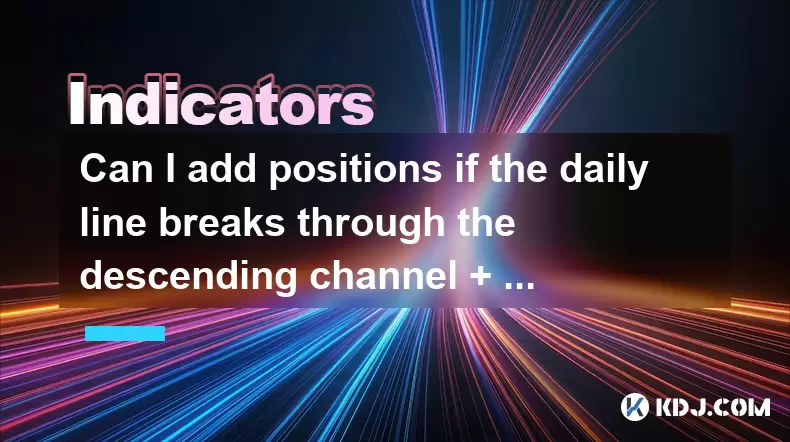
Can I add positions if the daily line breaks through the descending channel + the 30-minute moving average is in a bullish arrangement?
Jun 30,2025 at 11:00pm
Understanding the Descending Channel BreakoutWhen a daily line breaks through a descending channel, it indicates a potential shift in market sentiment from bearish to bullish. A descending channel is formed by drawing two parallel trendlines, where the upper trendline connects the lower highs and the lower trendline connects the lower lows. A breakout o...
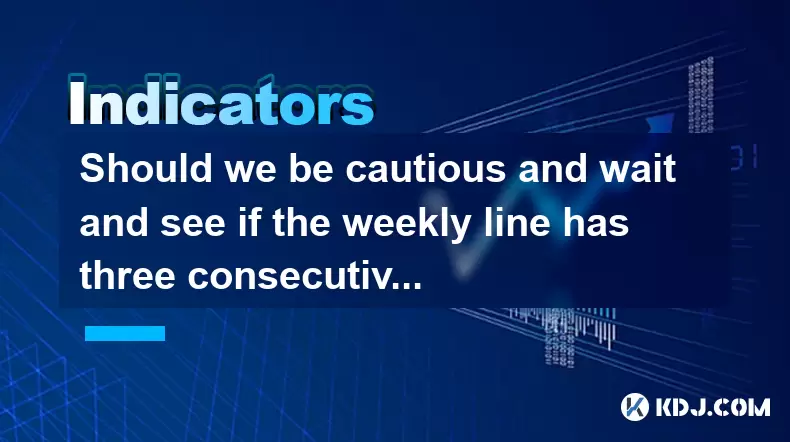
Should we be cautious and wait and see if the weekly line has three consecutive Yin lines + the daily MACD green column enlarges?
Jul 01,2025 at 12:42am
Understanding the Weekly Three Consecutive Yin Lines PatternIn technical analysis, three consecutive Yin lines on a weekly chart indicate a strong bearish trend. Each Yin line represents a week where the closing price is lower than the opening price, signaling consistent selling pressure. When this pattern appears three times in succession, it often sug...
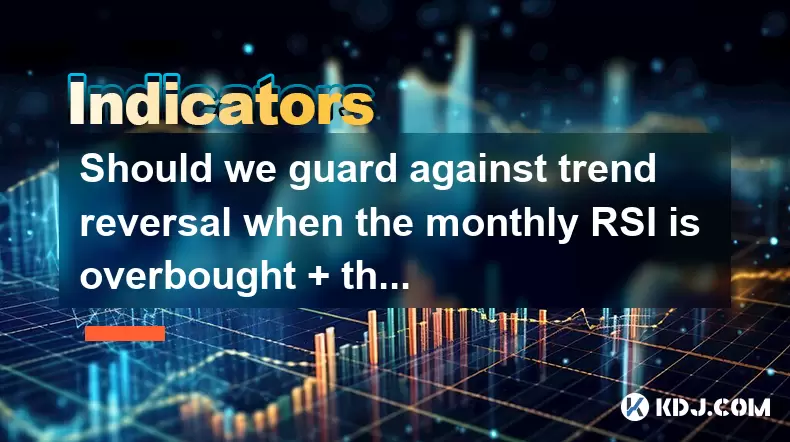
Should we guard against trend reversal when the monthly RSI is overbought + the weekly line has a long upper shadow?
Jun 30,2025 at 11:35pm
Understanding RSI Overbought Conditions in CryptocurrencyThe Relative Strength Index (RSI) is a momentum oscillator commonly used in technical analysis to identify overbought or oversold conditions in an asset. When the monthly RSI of a cryptocurrency reaches above 70, it is generally considered overbought, suggesting that the asset may be due for a pul...
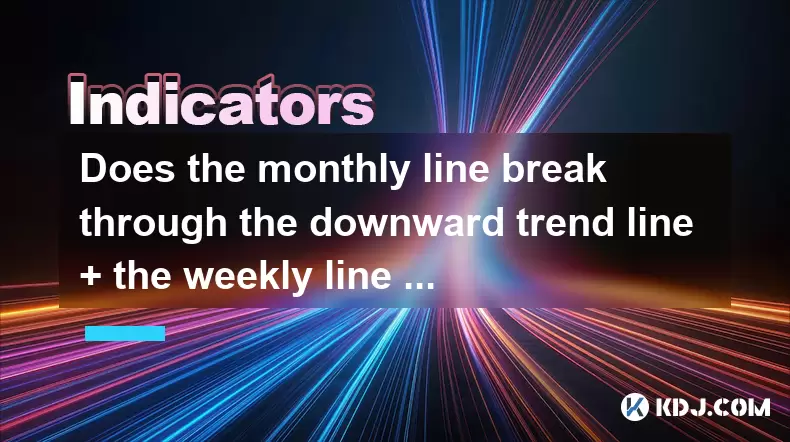
Does the monthly line break through the downward trend line + the weekly line with large volume confirm the reversal?
Jul 01,2025 at 04:49am
Understanding the Monthly Line Breakthrough in CryptocurrencyIn cryptocurrency trading, a monthly line refers to the price movement over a 30-day period represented on a candlestick chart. When this monthly line breaks through a downward trend line, it suggests that the long-term bearish momentum might be weakening. A downward trend line is drawn by con...
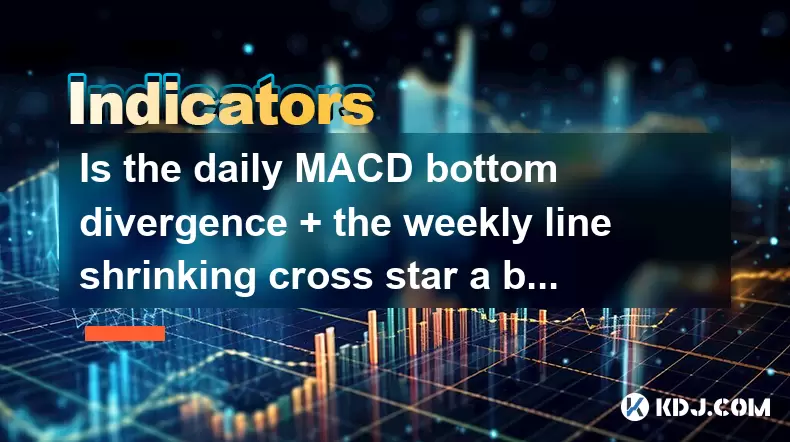
Is the daily MACD bottom divergence + the weekly line shrinking cross star a bottoming signal?
Jul 01,2025 at 03:49am
Understanding MACD Bottom Divergence in Cryptocurrency TradingThe Moving Average Convergence Divergence (MACD) is a widely used technical indicator among cryptocurrency traders to identify potential trend reversals. A bottom divergence occurs when the price of an asset makes a lower low, but the MACD line forms a higher low. This suggests that bearish m...
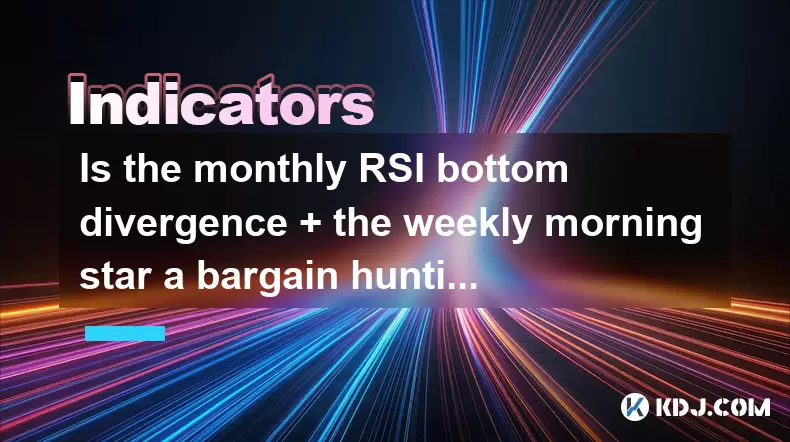
Is the monthly RSI bottom divergence + the weekly morning star a bargain hunting opportunity?
Jun 30,2025 at 09:57pm
Understanding RSI Bottom Divergence in Monthly TimeframesThe Relative Strength Index (RSI) is a momentum oscillator commonly used to identify overbought or oversold conditions in the market. When traders refer to a monthly RSI bottom divergence, they're observing a situation where the price makes a lower low, but the RSI makes a higher low on the monthl...

Can I add positions if the daily line breaks through the descending channel + the 30-minute moving average is in a bullish arrangement?
Jun 30,2025 at 11:00pm
Understanding the Descending Channel BreakoutWhen a daily line breaks through a descending channel, it indicates a potential shift in market sentiment from bearish to bullish. A descending channel is formed by drawing two parallel trendlines, where the upper trendline connects the lower highs and the lower trendline connects the lower lows. A breakout o...

Should we be cautious and wait and see if the weekly line has three consecutive Yin lines + the daily MACD green column enlarges?
Jul 01,2025 at 12:42am
Understanding the Weekly Three Consecutive Yin Lines PatternIn technical analysis, three consecutive Yin lines on a weekly chart indicate a strong bearish trend. Each Yin line represents a week where the closing price is lower than the opening price, signaling consistent selling pressure. When this pattern appears three times in succession, it often sug...

Should we guard against trend reversal when the monthly RSI is overbought + the weekly line has a long upper shadow?
Jun 30,2025 at 11:35pm
Understanding RSI Overbought Conditions in CryptocurrencyThe Relative Strength Index (RSI) is a momentum oscillator commonly used in technical analysis to identify overbought or oversold conditions in an asset. When the monthly RSI of a cryptocurrency reaches above 70, it is generally considered overbought, suggesting that the asset may be due for a pul...

Does the monthly line break through the downward trend line + the weekly line with large volume confirm the reversal?
Jul 01,2025 at 04:49am
Understanding the Monthly Line Breakthrough in CryptocurrencyIn cryptocurrency trading, a monthly line refers to the price movement over a 30-day period represented on a candlestick chart. When this monthly line breaks through a downward trend line, it suggests that the long-term bearish momentum might be weakening. A downward trend line is drawn by con...

Is the daily MACD bottom divergence + the weekly line shrinking cross star a bottoming signal?
Jul 01,2025 at 03:49am
Understanding MACD Bottom Divergence in Cryptocurrency TradingThe Moving Average Convergence Divergence (MACD) is a widely used technical indicator among cryptocurrency traders to identify potential trend reversals. A bottom divergence occurs when the price of an asset makes a lower low, but the MACD line forms a higher low. This suggests that bearish m...

Is the monthly RSI bottom divergence + the weekly morning star a bargain hunting opportunity?
Jun 30,2025 at 09:57pm
Understanding RSI Bottom Divergence in Monthly TimeframesThe Relative Strength Index (RSI) is a momentum oscillator commonly used to identify overbought or oversold conditions in the market. When traders refer to a monthly RSI bottom divergence, they're observing a situation where the price makes a lower low, but the RSI makes a higher low on the monthl...
See all articles

























































































